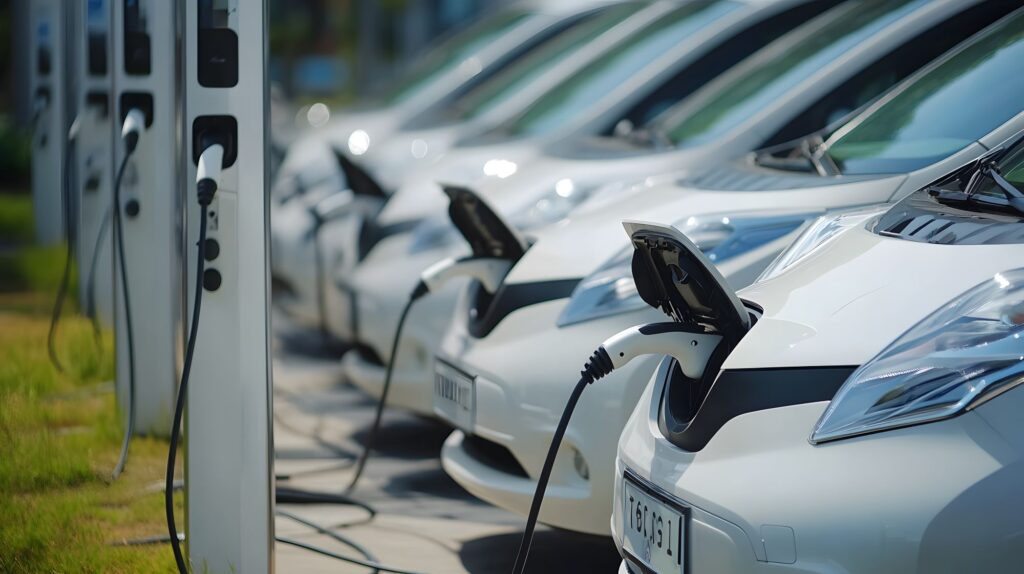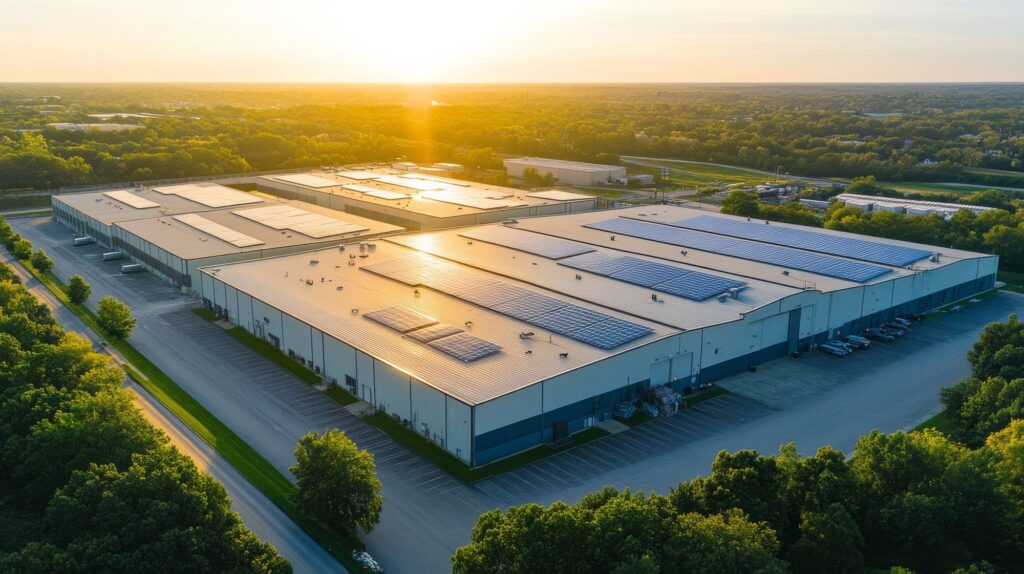If you’re considering buying or leasing a commercial property, you’re probably mindful of how much you might need to spend on things like heating and other utilities. As these costs remain high, understanding how to assess and improve energy efficiency has become essential not just for environmental reasons, but also for financial sustainability.
According to Business Energy UK, small and micro businesses in the UK typically use between 10,000 kWh and 35,000 kWh of energy annually, while medium-sized businesses consume between 60,000 kWh and 115,000 kWh. For large businesses, this figure jumps to around 155,000 kWh. To put this in perspective, the average UK home uses between 12,000 kWh and 20,000 kWh per year.
These usage levels translate to substantial annual costs. Micro-sized businesses can expect to pay £1,200-£2,300, small businesses £2,900-£3,900, medium-sized businesses £4,800-£6,700, and large businesses approximately £12,000 per year.
Whether you’re looking to purchase or lease a commercial property, here are five key considerations to help you assess its energy efficiency and make more informed decisions.
1. Energy performance and running costs
Understanding a property’s current energy performance is the essential first step in evaluating its efficiency and potential running costs.
Start by examining the property’s Energy Performance Certificate (EPC). Unlike residential EPCs, commercial EPCs use a different grading system where lower scores indicate better efficiency (A: 0-25, B: 26-50, C: 51-75, D: 76-100, E: 101-125, F: 126-150, G: over 150). For more details on commercial EPC requirements or possible exemptions, refer to the official government guidance.
Pay particular attention to the building emission rate (kgCO2/m² per year) which gives you a clear metric of the property’s environmental impact. Equally important is the primary energy use (kWh/m² per year). This can indicate which premises might use more energy, and even costs between premises – provided the same type of fuel is used for both.

Remember that from April 2023, it became illegal to continue letting commercial properties with an EPC rating below E (with some exemptions). More importantly, the minimum rating will rise to C by 2028 and B by 2030, affecting an estimated 85% of rented commercial properties across England and Wales. If a property’s current rating is below these future requirements, factor in the potential cost of necessary upgrades.
“Using the building emission rate from the Energy Performance Certificate as a key metric gives businesses a clear picture of a property’s efficiency,” says Jennifer Cameron, Net Zero Lead at Energy Saving Trust. “The primary energy use figure is particularly valuable as it can be translated to what it will cost to heat and light the property.”
2. Potential for energy improvements
When viewing a commercial property, it’s also wise to look beyond its current energy performance to assess its potential for improvement. This can make a significant difference to long-term operational costs and compliance with future regulations.
You can start by reviewing the EPC recommendations report, which categorises potential improvements by payback period: those that could pay for themselves within 3 years, between 3 to 7 years, and beyond 7 years. Consider how achievable these recommendations are from a structural, financial and contractual perspectives – this is especially important if you won’t own the building outright.
“Reducing overall energy demand should be your priority,” Cameron adds. “But you should also consider the potential for generating your own energy, particularly if your business operates during daylight hours and could benefit from solar power installation.”
Sub-metering is another important consideration. Properties with separate meters for water and all energy types dedicated to your business allow for accurate monitoring, which makes it easier to track efficiency and identify opportunities for savings.
Also assess the building management’s approach to sustainability. If they show little interest in this area, they may be less supportive of your energy efficiency initiatives.

The ideal property should also allow you some control over waste suppliers and building services that align with your recycling practices – ideally, waste from your business will be kept separate from others to ensure proper recycling practices can take place.
3. Location and accessibility
Outside of the bricks and mortar, a property’s location also plays a crucial role in its overall environmental impact.
Prioritise locations that are easily accessible by public transport to minimise commuting emissions from your workforce. Properties close to major transport hubs or with well-connected services can not only help to reduce your company’s carbon footprint, but also attract and retain staff who value sustainable commuting options. This accessibility factor directly contributes to reducing your scope 3 emissions – those indirect emissions that occur in your company’s value chain.
Electric vehicle (EV) infrastructure is becoming increasingly important as more businesses transition to electric fleets and more employees drive electric vehicles.

When viewing commercial properties, assess the availability of EV charging points in or around the site. If the building includes car parking but no charging infrastructure, investigate the potential to get it installed. Your business might be eligible for support through the Workplace Charging Scheme.
Cyclist-friendly facilities are also worth considering. Properties with secure internal bike storage and convenient changing or showering facilities can encourage sustainable commuting among your staff. If available, e-bike charging capabilities add another valuable benefit for cycling commuters.
4. Building design and systems
The physical design and installed systems of a commercial property have a major impact on its energy efficiency and the comfort of its occupants.
Natural light should be a priority – spaces with ample windows and good daylight both reduce the need for artificial lighting and can improve staff wellbeing and productivity.
Check if the building has adequate ventilation. Natural ventilation through windows can work, but if your building relies on this, you’ll need to consider outdoor air quality, noise and security to determine if it’s practical. In many modern buildings, mechanical ventilation systems provide controlled air exchange and filter contaminants – assess whether these systems are energy efficient.
For managing the temperature, check the details and design of the heating and cooling systems. Reducing reliance on these can help you save energy, so consider if possible alternatives such as ceiling fans, window treatments and programmable and zone controls are practical.
When scoping out the property’s lighting systems, look for energy-efficient LED installations as these consume significantly less power and have longer lifespans than traditional lighting. In a similar vein, assess the heating, ventilation and air conditioning (HVAC) systems for their age, efficiency and control capabilities. Modern systems with zone controls and smart features can deliver substantial energy savings.
Different business types have varying energy needs that should be considered. For example, food retailers need to factor in the cost of running refrigeration units, manufacturers might have specialised equipment with specific power requirements, and offices typically focus on lighting and IT equipment. As Cameron notes: “This is where there is likely most variation between business types – a baker might need to consider the cost of running ovens, while offices might focus more on lighting and IT equipment energy use.”
The layout of the space should also allow for flexibility to adapt to your future needs, and thus minimis wastage during any renovations. Consider whether the commercial property you are looking at would allow for easy reconfiguration as your business evolves.
5. Renewable energy and futureproofing
As energy costs rise and environmental regulations tighten, considering a property’s potential for renewable energy integration could be an important part of futureproofing your business.

Check if the property has existing renewable energy installations such as solar panels, or if there’s potential to add them. Properties with suitable roof orientation and structural capacity for solar installation could offer significant long-term energy cost savings, particularly for businesses that operate primarily during daylight hours.
Beyond solar, there are other renewable options such as ground or air source heat pumps for heating and cooling. These technologies can reduce a property’s carbon footprint and operating costs over time, though they require suitable space and infrastructure.
Future regulatory changes are another important consideration. With the UK’s commitment to net zero emissions by 2050, commercial properties face stringent energy efficiency requirements. Choosing a property that either already meets future standards or can be reasonably upgraded to meet them could save costs down the line.
Looking ahead to a sustainable property future
Energy efficiency in commercial properties isn’t just about environmental responsibility – it’s an important business consideration with direct impacts on operational costs, regulatory compliance and long-term sustainability.
By carefully evaluating these five key areas when searching for your next commercial space, you can make more informed decisions that benefit both your business’s bottom line and its environmental footprint.
The commercial property sector is clearly on a journey toward greater sustainability. With tightening regulatory requirements, and greater corporate emphasis on operating sustainably, there is growing recognition that energy efficiency is a critical factor in buying and leasing commercial property.
For more information on sustainable commercial properties, check out our Sustainable Commercial Property: A Beginner’s Guide and explore Rightmove’s commitment to sustainability in our Environmental Policy.